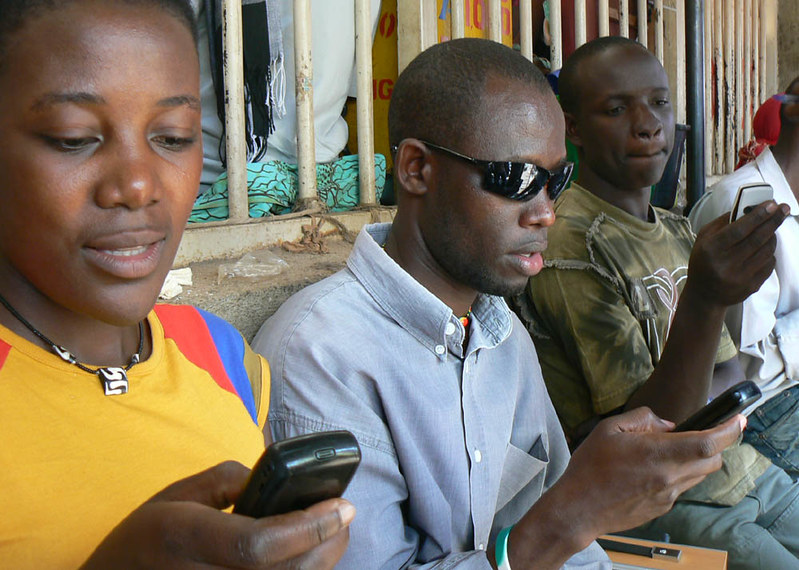“Private sector” appears 18 times in the outcome document from last year’s UN financing for development conference in Addis Ababa—exactly the same number of times as “international cooperation.” As we approach the first anniversary of the world signing up to the SDGs, where are the ideas that bring private sector ingenuity and capital to delivering them? In the coming weeks, we’re going to tell you about six.
They are the result of a challenge that CGD laid down to UBS, a Swiss bank: can its staff use their financial expertise to address urgent problems in international development? CGD’s senior fellows worked up a list of tough development problems for an internal Grand Challenge competition. We asked them how clever financial engineering and smart product design could help us:
- Crowd investment into neglected diseases?
- Help investors divest from carbon to fight climate change?
- Catalyse investment in infrastructure?
- Make it easier to save for the future?
- Transform education by using data to reward learning outcomes?
More than 1,200 UBS staff from across the world took part by forming 300 teams and coming up with 250 ideas. UBS executives and CGD senior fellows whittled those down to just six finalists, and a group of CGD senior fellows gave these six teams focused feedback on how to ramp up the development impact of their business cases for new products, services, or funds. These were all compelling and clever, and we’ll tell you about them in a series of blogs. But there could be, as they say, just one winner: a single team won out in a tough jury session held in Zürich in June.
The winning concept is nattily-named Spavest (for SPend, sAVe, invEST—we know, we know...). It’s an automatic savings app that sits on top of normal transactions to make building up a healthy pot of savings much easier for anyone using electronic payments. Each time someone enrolled in Spavest pays for something, a small percentage of the transaction is shaved off and deposited in a long-term savings account.
Rather than creating liquid assets to protect against ill-health or unexpected expenses which derail family finances, Spavest’s app helps households save for retirement or other long-run goals. That means the savings can be accrued slowly and pooled into cheap, safe investments like index funds.
That’s a smart solution to a surprising new problem. Saving is psychologically taxing, and we all struggle to save enough (this is true of people who are relatively poor in richer and poorer countries alike). That’s now creating a downside risk for otherwise dynamic emerging economies: many developing countries are, in fact, ageing quickly. Birth rates are at or below the 2.1 replacement rate that populations need to sustain themselves across emerging Asian and Latin American markets.
As a result, the number of elderly people to workers (the “old age dependency ratio”) is rising. Despite rising incomes, this shift creates a mismatch between elderly populations and the resources for their care. Even if we account for better productivity and later retirement, governments and social safety nets have not kept up.
Spavest and related interventions sit in the wedge between demand for savings and supply of cheap, scalable, sustainable, and psychologically easy ways to save. Packaging the idea as an app takes advantage of the growing number of smartphone users in frontier economies. The GSMA, a mobile operators industry group, predicts that four-fifths of smartphone connections will come from the developing world by 2020. And people in a growing list of countries are already leapfrogging some banking services on even simpler technology, making electronic payments through M-pesa and related protocols.
Let’s be clear: Spavest probably won’t start out by targeting the 'bottom of the pyramid'. For one thing, along with China and other emerging economies, the current business plan would roll out the service for lower-income people in the UK and the US. And in frontier economies, its primary users will be people comparatively well-off enough to own smartphones. Though research by Pew finds that smartphone use is quickly rising in emerging economies (and you can pick up a barebones model for less than $20 in some places), the very poorest of the poor generally don't use mobile payments or have the slack in their budgets to accrue savings.
But that’s okay. People just a rung or two up the ladder also struggle to save, continue to share unequally in the fruits of economic growth, and deserve to reap the benefits of precisely these kinds of innovations. The premise of working with the private sector to deliver development wins cannot be that every intervention tackles every market segment, or that we focus only on innovations which need continuous subsidies to be viable.
Over the coming weeks, Spavest’s originators will take their idea through more rounds of feedback and iteration with CGD’s senior fellows. After that, there’s a real chance that Spavest will be piloted in some key test markets.
In the end, there are two simple reasons that the global public sector—donor agencies, private foundations, national governments, and multilateral agencies—should want to work with private firms: finance and function. Our ambitious Sustainable Development Goals are underfunded, with an estimated gap of over $2 trillion a year between what is needed and the public funding that’s on the table. Even if the global public sector had deep enough pockets, though, there are innovations that tackle development problems that private firms are better placed to develop and deploy. Governments might pay for roads, but we’d be in trouble if bureaucrats built them.
So bringing the public and private sectors together is about “how?” much more than “how much?” CGD’s new workstream on innovative finance focuses on how to effectively balance the public sector’s patience with the private sector’s appetite for risk and capacity to fail, learn, and iterate.
The financial sector hasn’t covered itself in glory through the financial crisis and other scandals. But the artificial dividing line between the issues people who care about fighting poverty rightly obsess over and the solutions that firms like UBS can develop impacts billions of people every day.
Really delivering on the SDGs means gaining a level of comfort and a level of expertise in crossing that divide. Done right, we will unlock much more capital and much more innovation for the global poor.
Over the coming weeks, CGD’s senior fellows who coached finalists in the Grand Challenge will be posting brief blogs about the proposals, and on what else could be done. You can read about the business cases here.
UBS provides unrestricted support for CGD's independent research on innovative finance for development. UBS also supports CGD's participation in its Grand Challenges program.
Disclaimer
CGD blog posts reflect the views of the authors, drawing on prior research and experience in their areas of expertise. CGD is a nonpartisan, independent organization and does not take institutional positions.





